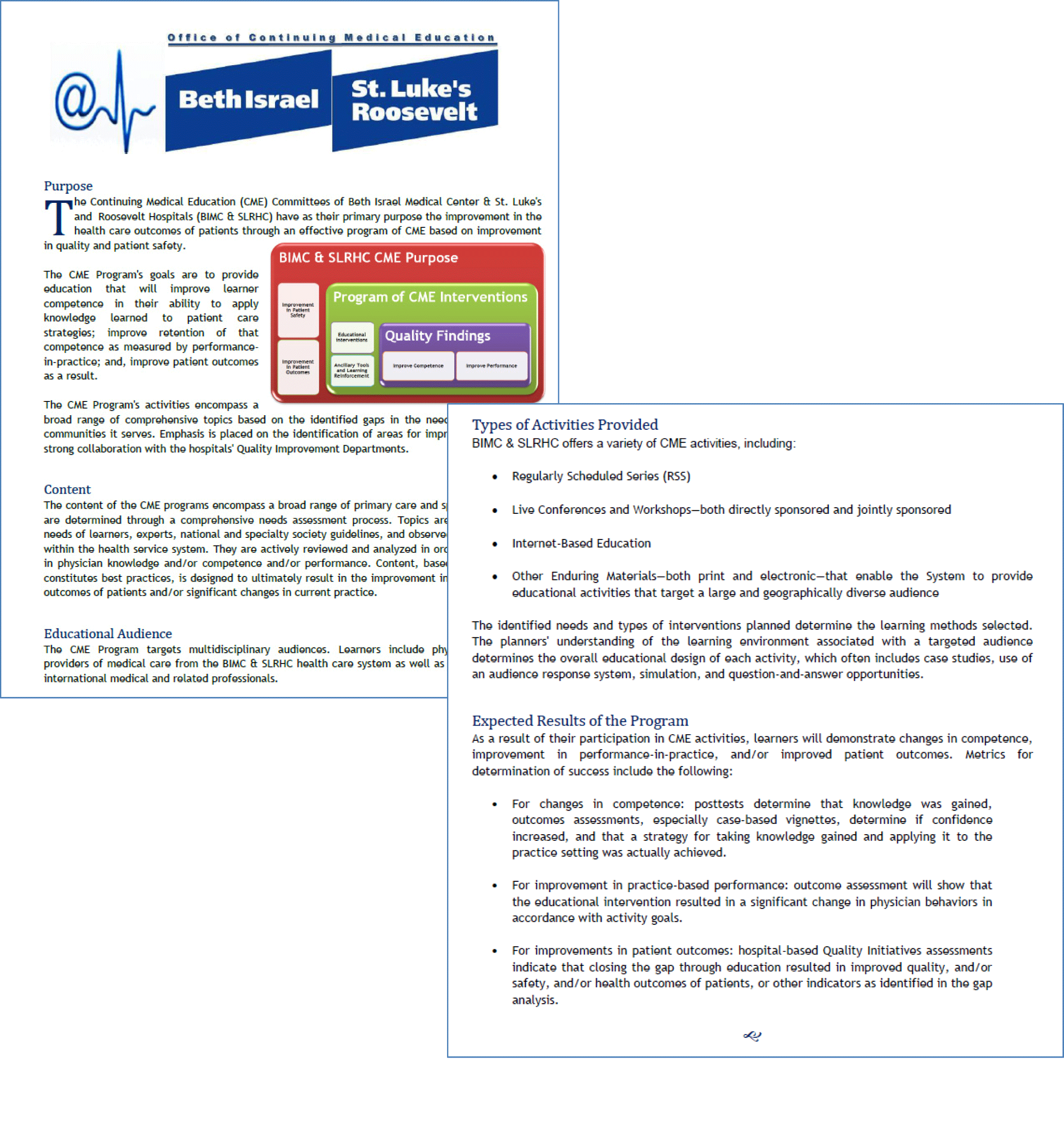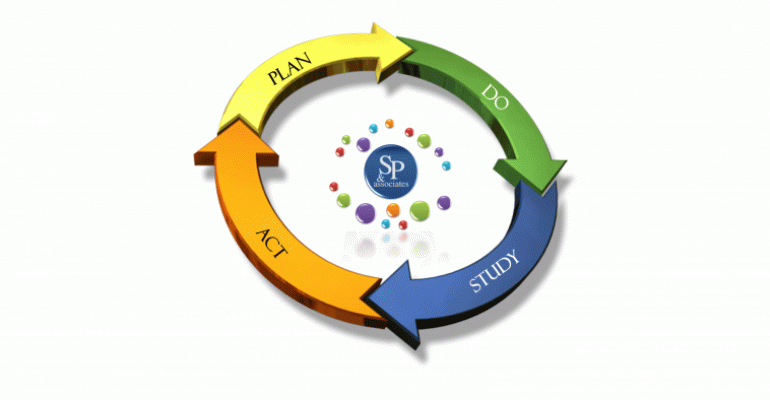
A clear mission statement will help you to initiate, evaluate, and refine all of your program’s activities to ensure they’re aligned with the organization’s goals. The Accreditation Council for Continuing Medical Education articulates the five components of a good mission statement in Criterion 1 of the Criteria for Accreditation for all AMA PRA Category 1 credit activities:
“The provider has a CME mission statement that includes all of the basic components (CME purpose, content areas, target audience, type of activities, expected results) with expected results articulated in terms of changes in competence, performance, or patient outcomes that will be the result of the program.”
The ACCME expects your program will detail how these five components map how the organization intends to change its learners’ outcomes through its overall CME program. Providers describe the manner in which their program intends to achieve these expected results in the content areas the CME activities will address, who the target audience will be, and what types of activities the provider will pursue. You’re in compliance when all the components are mentioned and the expected results are “articulated in terms of specific learner changes.” (See Figure 1 for an example of an explicit mission containing the five components, provided by Beth Israel Medical Center/St. Luke’s-Roosevelt Hospital Center.)
Program Analysis and Mission
Every four (or six) years, accredited providers are expected to discuss how well they are meeting the elements of their own CME Mission (Criterion 12) and any improvements that emanate from the overall analysis of the program. In truth, this is a part of any organization’s continuous quality improvement process, and measuring performance is part of an ongoing progression from assessing results, to determining areas needing improvement, to implementing improvements, to measuring if the improvement made a difference to the organization’s quality and effectiveness as shown in Figure 2.

But how do you engage a CME committee or advisory board in that process? How do you document the process? How do you identify program improvements (Criterion 13)? And when you implement improvements (Criterion 14), how do you measure the impact those improvements had on the mission (Criterion 15)? Consider these steps:
1. To determine whether the program meets all components of the CME mission, integrate the analysis done to satisfy Criterion 11 (changes in learner competence, and/or performance and/or patient outcome) with a broader view of the CME program and organization.
2. Ask members from your committee or advisory board to analyze and present various sections of the continuing quality improvement, or CQI, process—this will invest them in the overall program analysis and push them into “owning” the program and its quality improvement process!
3. Organize the analysis into the five components of an ACCME-defined mission statement to make it easier to assess results by mission section.
4. Make sure you include an opportunity to update your CME mission at the conclusion of the program analysis so that changes to your program can be codified.
Engage Your Stakeholders
Any program-based analysis should include your organization’s key CME stakeholders. If you have a CME committee, advisory board, or an organizational senior management team, assemble it at least annually to evaluate the degree to which your organization has met each of the mission’s elements. You can do the annual assessment in person, via telephone conference, or in a Skype or videoconferencing session. Be sure to keep formal minutes that include pertinent points and changes or decisions made.

Before you can engage your stakeholders, however, you need to master the concepts associated with CQI and, in turn, comprehend the clear relationships between Criterion 11, Criterion 12, and Criteria 13-15 so you can be an enthusiastic advocate for the overall program analysis.
During this annual assessment, you will identify, plan, and implement the needed or desired changes in the overall program (e.g., planners, teachers, infrastructure, methods, resources, facilities, interventions) that are required to improve on your ability to meet the CME mission (Criterion 13). Your team would then create a strategic plan (or simply just a list) for improvement, based on the Criterion 11 and Criterion 12 analysis.
Array the strategic plan (or “to do” list) in a spreadsheet that includes the date changes were made or the date changes will be completed (Criterion 14). Document examples in activity files.
Like Criterion 12, Criterion 15 is focused on the results of the specific changes implemented in Criterion 14. What impact have the improvements implemented had on your ability to meet the CME mission? How did you measure any improvement?

Include this analysis in the annual assessment discussion with your key stakeholders. You can gather improvement data from activity evaluation summaries, course chair comments, analysis of committee members, and learner surveys. Many of your improvements should also be documented in activity files that will show concrete examples. You can download an sample improvements log from www.passinassociates.com/MMMdownloads.
Steve Passin, FACME, CCMEP, is president and CEO of Steve Passin & Associates. He is based in Newtown Square, Pa., and may be reached at [email protected]. Denise Doyle, CCMeP, is an associate with Steve Passin & Associates. She is based in Ocean Springs, Miss. You can e-mail her at [email protected].





